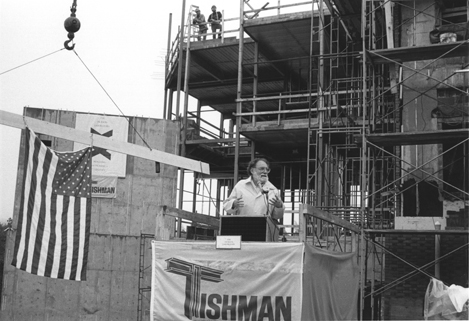
Faculty Research 1990 - 1999
The pathophysiological significance of nondesmoglein targets of pemphigus autoimmunity. Development of antibodies against keratinocyte cholinergic receptors in patients with pemphigus vulgaris and pemphigus foliaceus.
Document Type
Article
Publication Date
1998
Keywords
Acantholysis/immunology, Adult, Aged, Aged, 80 and over, Animal, Autoantibodies/*biosynthesis, Case-Control Studies, Cell Adhesion/immunology Cell Adhesion Molecules/*immunology, Cytoskeletal Proteins/immunology, Dermatitis, Contact/immunology, Desmosomes/immunology, Erythema Nodosum, Female, Genetic Engineering, Human IgG/immunology, Keratinocytes, Lupus Erythematosus, Systemic, Male, Mice, Mice, Inbred BALB C, Mice, Inbred C57BL, Mice, Inbred Strains, Middle Age, Pemphigoid, Bullous, Pemphigus/classification/*immunology, Receptors, Cholinergic, Skin Diseases, Vesiculobullous/immunology Skin Ulcer/immunology, Urticaria/immunology
First Page
971
Last Page
980
JAX Source
Arch Dermatol 1998 Aug;134(8):971-80
Grant
CA20408/CA/NCI
Abstract
OBJECTIVES: To determine whether nondesmoglein (non-Dsg) autoantibodies are pathogenic and whether they recognize keratinocyte cholinergic receptors that control cell adhesion because antikeratinocyte autoimmunity in patients with pemphigus vulgaris is not limited to the development of autoantibodies to Dsg. DESIGN: To determine whether non-DSg autoantibodies are pathogenic, we sought to induce pemphigus in genetically engineered neonatal mice lacking Dsg 3 using pemphigus vulgaris IgGs that did not cross-react with Dsg 1. To determine whether pemphigus autoimmunity involves keratinocyte cholinergic receptors, the latter were separated from cell membranes of human keratinocytes, tagged with the covalent label [3H]propylbenzilylcholine mustard, and used as an antigen in a radioimmunoprecipitation assay of 34 pemphigus vulgaris and 6 pemphigus foliaceus serum samples. SETTING: The dermatologic clinics of the University of Minnesota, Minneapolis; the Mayo Clinic, Rochester, Minn; and the University of California-Davis Medical Center, Sacramento. PATIENTS: Serum samples were collected from 34 patients with pemphigus vulgaris and 6 patients with pemphigus foliaceus (aged 31-89 years) and from 7 age-similar patients of both sexes with nonpemphigus blistering or the following immune-mediated conditions: pemphigoid gestation, bullous drug eruption, lupus erythematosus, erythema nodosum, urticaria, acute contact dermatitis, and skin ulcers. MAIN OUTCOME MEASURES: Clinical, laboratory, and histopathologic findings. RESULTS: Extensive skin blistering accompanied by the Nikolsky sign and suprabasilar acantholysis was induced in the Dsg3null mice that received pemphigus, but not normal human IgGs. In the radioimmunoprecipitation assays for reactivity with cholinergic receptors, the mean radioactivity precipitated by pemphigus serum samples significantly exceeded both normal- and disease-control levels (P = .001-.02). The mean individual levels of radioactivity precipitated by 34 pemphigus vulgaris and pemphigus foliaceus serum samples (85%) exceeded control values by a mean of approximately 2.6 times. CONCLUSIONS: Autoantibodies to keratinocyte cell-surface molecules other than Dsg 1 and Dsg 3 can induce clinical features of pemphigus vulgaris. Patients with pemphigus vulgaris and those with pemphigus foliaceus develop IgG antibodies that precipitate radiolabeled cholinergic receptors. Because these receptors control keratinocyte adhesion and motility, their inactivation by autoantibodies may elicit intracellular signals that cause disassembly of desmosomes, leading to acantholysis and blistering.
Recommended Citation
Vu TN,
Lee TX,
Ndoye A,
Shultz LD,
Pittelkow MR,
Dahl MV,
Lynch PJ,
Grando SA.
The pathophysiological significance of nondesmoglein targets of pemphigus autoimmunity. Development of antibodies against keratinocyte cholinergic receptors in patients with pemphigus vulgaris and pemphigus foliaceus. Arch Dermatol 1998 Aug;134(8):971-80

